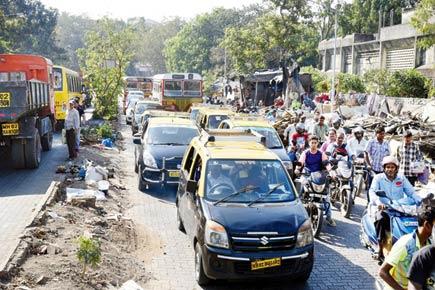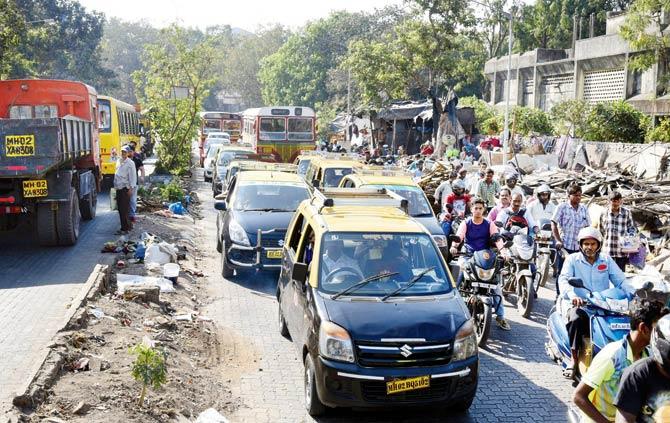BMC’s annual environment status report says the central suburb has the most polluted traffic junctions compared to Andheri on the western side


Last year in Wadala, air pollutant NO2 was recorded at 50 microgram per cubic meter. The main source of NO2 is vehicles at traffic junctions. Representation pic
The BMC’s annual Environment Status Report (ESR) is out and Wadala has emerged as the city’s most polluted traffic junction. The civic body’s 2015-16 report also points out to the worsening of air quality around the traffic junctions in the city, thanks to the addition of 2 lakh vehicles on Mumbai’s roads.
ADVERTISEMENT
The BMC has recorded this data through air quality monitoring vans on traffic junctions in Andheri, Wadala and Worli (see table: air quality at traffic junctions).
While data was recorded at two traffic junctions in Andheri and Wadala, the device put up at Worli was down and thus, there is no data available for it. Through this, it has been revealed that suspended particulate matter (SPM) that can cause serious respiratory diseases has increased 4 times compared to last year. Such matter, mainly dust, sulphates, and black carbon lodges itself deep inside the lungs and can cause cardiovascular and respiratory diseases and even lung cancer.
The ESR also shows alarming level of fine particulate matter (PM) 2.5 as well as PM10 in the air. PM2.5 refers to an air pollutant with a diameter of 2.5 microns or less which can enter inside the lungs easily when we breathe. PM10 refers to solid and liquid particles less than 10 microns in diameter. PM10 particles can stay in the air for minutes or hours, while PM2.5 particles last for days or weeks.
According to the ESR, 2 lakh vehicles have increased in the city compared to last year. Till March 2016, Mumbai has 27.88 lakh vehicles on the roads. However, in 2015 the vehicle population was 25.47 lakh.
NO2 rises
The presence of Nitrogen Dioxide (NO2) in air is also on the rise compared to last year. In 2015-16, the annual average of NO2 was recorded at 54 and 84 microgram per cubic meter at Wadala and Andheri traffic junctions respectively. Last year, Andheri recorded 62 micrograms per cubic meter, while in Wadala it was 50 mircrogram per cubic meter. The increase in NO2 helps in formation of other air pollutants such ozone and particulate matter.
Source of emission of NO2 is from vehicles stuck at traffic junctions. A high presence of NO2 can cause acidic rain.
As per the Central Pollution Control Board (CPCB), the permissible limit for the pollutants is 100 and 60 micrograms per cubic meter of air for PM10 and PM2.5 respectively. Safe limit for NO2 is 40 micrograms per cubic meter annually.
BMC has no action plan
The civic body has only released this data as of now and has not commented on its future plans to combat the increasing level of pollution in the city. mid-day reached out to Deputy Chief Engineer, (Environment) of BMC, Vinayak Karnik for comment on what the civic body plans to do with the data, but he remained unavailable.
 Subscribe today by clicking the link and stay updated with the latest news!" Click here!
Subscribe today by clicking the link and stay updated with the latest news!" Click here!







